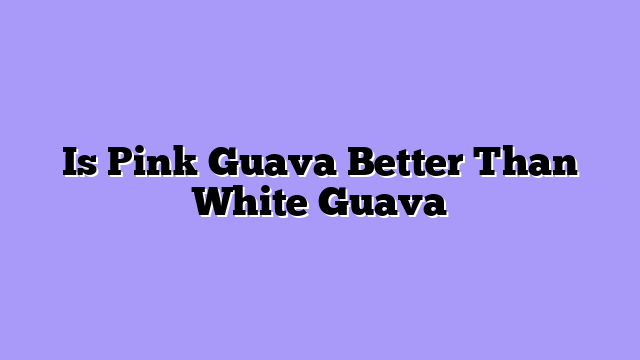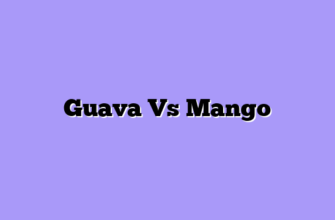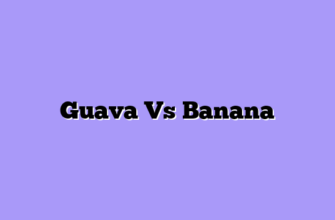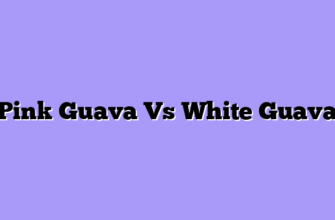As someone who’s dedicated the last decade to growing both pink and white varieties of Psidium guajava, I get this question almost daily at my farm stand. Let me tell you something interesting – it’s like asking whether chocolate or vanilla ice cream is better. The answer really depends on what you’re looking for, and I’ve grown to appreciate both for their unique characteristics.
The Visual Appeal: First Impressions Matter
Let’s be honest – when you cut open a pink guava, it’s quite a show-stopper. I love watching visitors’ faces light up when they see that vibrant pink flesh for the first time. It’s nature’s way of saying “Instagram me!” The color ranges from soft pink to deep ruby red, depending on the variety and ripeness. I often joke that pink guavas are the flamingos of my orchard – they certainly know how to stand out!

I’ve noticed that newcomers to guava often gravitate toward the pink varieties first – we eat with our eyes, after all. But many of my regular customers have learned to appreciate both colors equally, understanding that appearance is just one part of the story.
What fascinates me most is how the color can slightly vary even within the same variety depending on growing conditions. Some seasons, my pink guavas develop deeper hues, especially when we get that perfect balance of sun and rain.
Flavor Profile: The True Test
Here’s where things get really interesting! Pink guavas typically have a more intense, sweeter flavor profile. They’re what I call my “tropical candy” – rich, bold, and almost berry-like in taste. The sweetness tends to be more concentrated, making them perfect for desserts and preserves.
White guavas are generally milder and more refreshing, with subtle floral notes that remind me of fresh spring mornings. They often have a cleaner, crisper taste that some people compare to pears with a tropical twist. I find them incredibly refreshing when eaten chilled on a hot day.
The texture varies too – pink guavas usually have softer, creamier flesh, while white varieties tend to be slightly firmer and more crisp. This difference in texture actually affects how people enjoy them. My customers who like to eat guavas like apples often prefer the white varieties.
What’s really fascinating is how the flavors develop as the fruits ripen. Pink guavas become increasingly sweet and aromatic, while white guavas maintain their refreshing qualities even at peak ripeness.
Nutritional Differences
As a farmer who regularly works with both varieties, I’ve learned quite a bit about their nutritional profiles. Pink guavas generally have higher levels of lycopene – that’s the same antioxidant that gives tomatoes their red color. In fact, pink guavas contain more lycopene than tomatoes! This makes them particularly valuable for those interested in antioxidant-rich foods.
White guavas, while lower in lycopene, are no slouches in the nutrition department. They’re often slightly higher in vitamin C, and some studies suggest they have higher levels of certain minerals. I always tell my customers it’s like choosing between spinach and kale – they’re both incredibly nutritious, just in slightly different ways.
Both varieties are excellent sources of fiber, vitamins, and minerals. I’ve noticed that the seeds in white guavas tend to be slightly smaller and softer, which some people find more palatable when eating the fruit whole.
The pectin content – that’s the natural thickening agent – seems to be higher in pink guavas, which is why they’re often preferred for making jams and preserves.
Culinary Applications
Through years of experimenting in my farm kitchen, I’ve found that each variety shines in different culinary applications. Pink guavas are fantastic for making preserves, jams, and jellies. Their natural sweetness and higher pectin content make them perfect for these preparations. Plus, the color is simply stunning in glass jars!
White guavas excel in fresh applications – smoothies, salsas, and salads. Their milder flavor doesn’t overpower other ingredients, making them more versatile in savory dishes. I love using them in tropical fruit salads where their subtle sweetness complements other fruits without dominating.
For juicing, both varieties have their merits. Pink guava juice has a richer, more tropical taste and beautiful color, while white guava juice is more refreshing and lighter on the palate. I often blend them together to get the best of both worlds.
When it comes to baking, pink guavas tend to hold their flavor better under heat, while white guavas can become quite subtle. That’s why I usually recommend pink varieties for pies and pastries.
Farmer’s Verdict: After years of growing and working with both varieties, I can honestly say that neither is definitively “better” – they’re just different! Pink guavas are your go-to for bold, sweet flavors and stunning presentation, while white guavas offer a more subtle, refreshing experience. The best choice depends entirely on your personal taste preferences and how you plan to use them.








